What Makes An Effective Phonics Program?
We all want to know if what we are using for our students or own children is effective and good no matter what it may be. When it comes to structured literacy having an effective phonics program is essential, but do we know what that really means? This is something we wonder if we are:
- A teacher working towards structured literacy instruction
- A parent currently homeschooling or wanting to
- A teacher trying to see what is missing in a program you have used for years
- A parent with a struggling reader wondering if your child is getting what they need
To help answer our questions: here are the 7 characteristics Wiley Blevins outlined in his book Differentiating Phonics Instruction for Maximum Instruction. (Highly recommend this book too.)
1.Readiness Skills
Effective phonics program will include both phonemic awareness and alphabet recognition.
Phonemic awareness is the awareness that words are made up of sounds.
Alphabetic recognition is knowing letters by their name, sound, and formation.
It is vital students know their letter sounds, names, and how to write the letters.
It is vital they can orally blend and segment a word. Blevins states “oral blending and oral segmentation have the most positive impact on reading and writing development.”
Students need to be able to break down a word into sounds and put the sounds back together.
Having these three skills- alphabet recognition, orally blending and segmenting words allows students to start working on phonics where we connect letters to sounds.
There is no set number of how often to do these skills, but most of this work is done in kindergarten and first grade.
There are programs that work in rhyming, counting syllables as phonological awareness along side phonemic awareness. These are good things too for overall word awareness (see number 5) but there should be emphasis on students working on words at the phoneme level for the most benefit to their reading and writing development.
2.Scope and Sequence
Let’s start with what a scope and sequence is not.
It is not just a list of what skills you teach.
It is not isolated to just your grade.
A true scope and sequence of a program should extend across grades including information about when skills are introduced and when the skills should be mastered. Possibly even when skills are reviewed as it can take weeks for skills to be mastered. These skills are arranged from simple to complex as they build upon each other.
There is no one correct scope and sequence. There is usually some variations if blends are taught first or digraphs, even the order of vowels. Some vary in where they include teaching the doubling rule, dropping y or order of r-controlled vowels. However, a scope and sequence should be following conceptual leaps- connecting one letter to one sound, knowing that two letters can work together to represent a sound, knowing that there can be multiple ways to represent a sound (like with vowel teams, diphthongs) and where the sound is in a word can changes how it is represented.
There are plenty of scope and sequences I see offered that you can find by a simple search, but the one that will work the best for you is the one that goes with what you are teaching.
3. Blending
Blevins states this is something that “must be frequently modeled and applied” as it is the main strategy students will use when sounding out words. This includes even for those multisyllabic words.
This means it is a skill all students need, so we need to make sure to differentiate to ensure all students are seeing their teacher model this and also getting practice blending the types of words they need.
Again there is no set number of times to do this but it makes sense to do this daily with beginning readers.
4. Dictation
This is just the fancy word for guided spelling. And yes you can start this in kindergarten.
Blevins says dictation “can accelerate both students’ spelling abilities and understanding of the common English spelling patterns.”
It should be something that is done multiple times per week either as a whole group activity or in small groups to differentiate the level of the activity.
5. Word Awareness
I know this is general, but what Blevins is referring to is the need for students to have “opportunities to play with words and experiment with how word parts combine to solidify and consolidate their understanding” for how words work.
This would be where word sorts are used, along with word mapping, word chains, word ladders, word building, writing tasks, a write the room activity and phonics games that truly apply the skills. It is intentionally having students work with words to apply phonics skills that are using for reading and writing.
6. High Frequency Words
Yes, high frequency words should be a part of the program. It is even better if those that are decodable or become decodable are taught with the skill that makes them so. Words, that are truly irregular, should be taught so students aren’t just told to memorize them.
Instead, students should be taught these words by mapping them out as a way to draw attention to sounds and spellings pointing out what makes them different.
7. Reading Connected Text
The types of books we give to students as beginning readers “has a powerful effect on the word reading strategies students develop (Juel & Roper-Schneider, 1985) and can affect student motivation to read (Blevins, 2000).”
Providing students with decodable texts that have the phonics skills they have been taught allows them to apply those skills to their reading. It also helps them be successful in reading as they are facing words they don’t know or don’t have the skills to know. A key to making decodable texts truly impactful to students’ reading is working in comprehension, writing or a writing activity with these texts.
Once students have mastered more phonics skills they can start reading less decodable books and more picture books or other books available to them to apply the many skills they know to their reading.
BONUS: THE TEACHER
It is you- a classroom teacher or homeschooling parent who makes the difference.
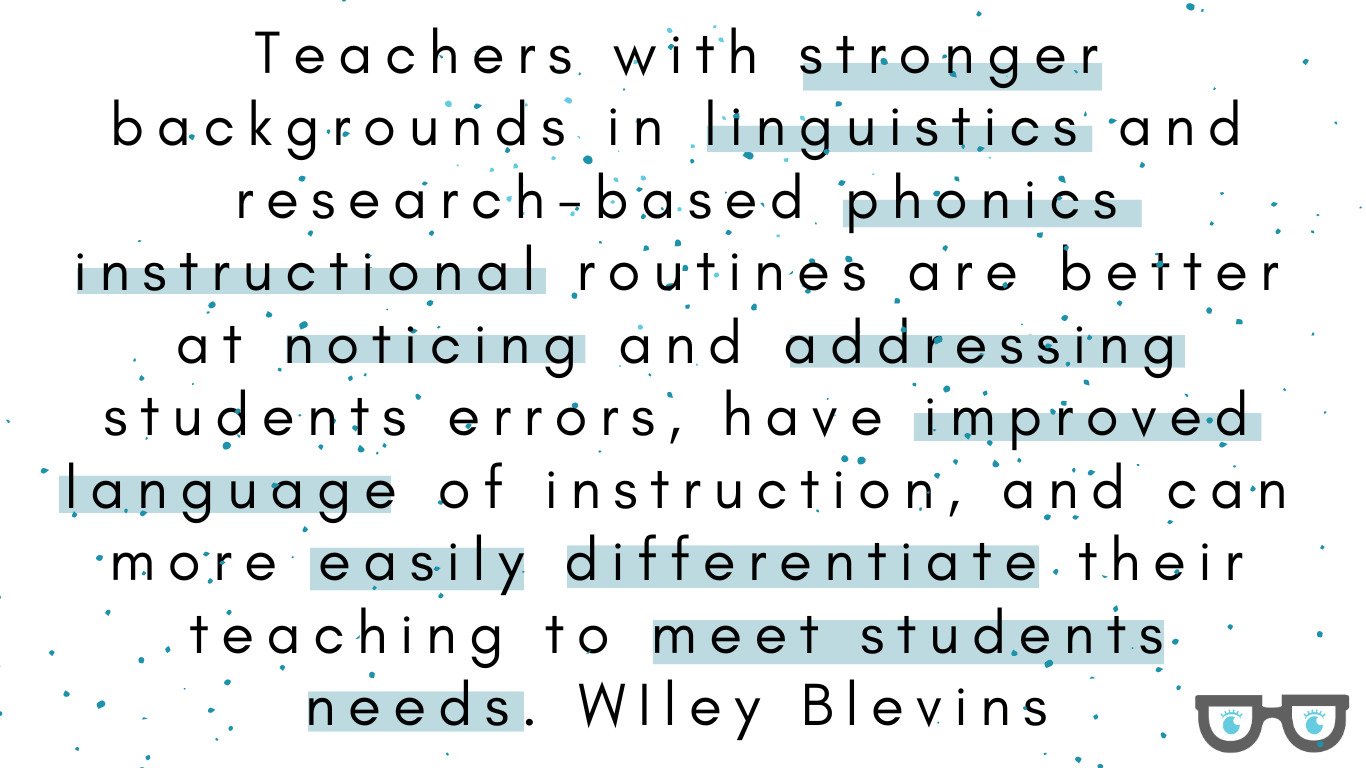
Being informed about the research and phonics helps make all of these components more doable as you know how to meet students’ needs.
Questions To Ask
I hope this helps clarify what an effective phonics program should include. Maybe you are mentally checking all these as you read or alarms or going off in your head. I put together a list of questions from both the teacher and parent perspective. The teacher questions are direct to be asked to administrators, literacy coaches or curriculum department and a few for reflection on your teaching. Parent questions may be asked to teachers or administrators, but are good ones for teachers to be able to answer especially if you know you are talking to a concerned parent.
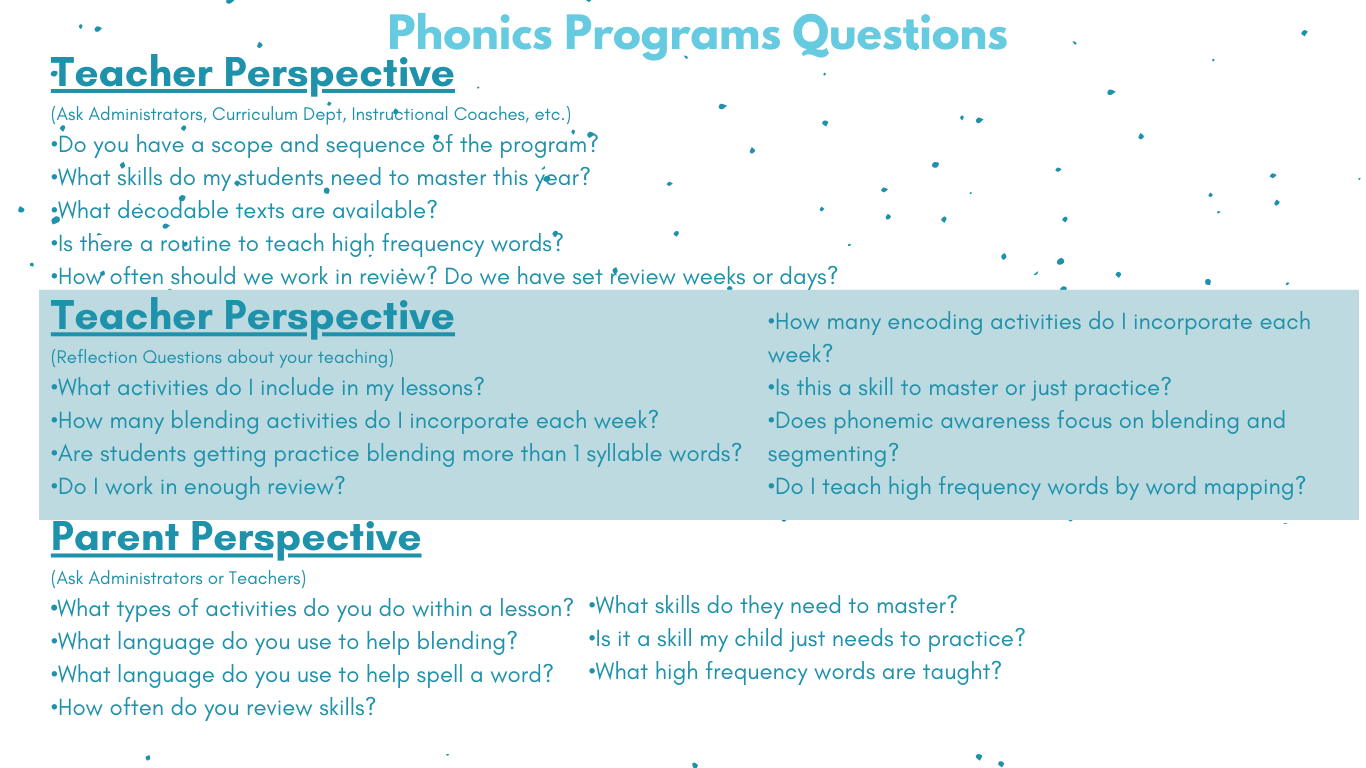
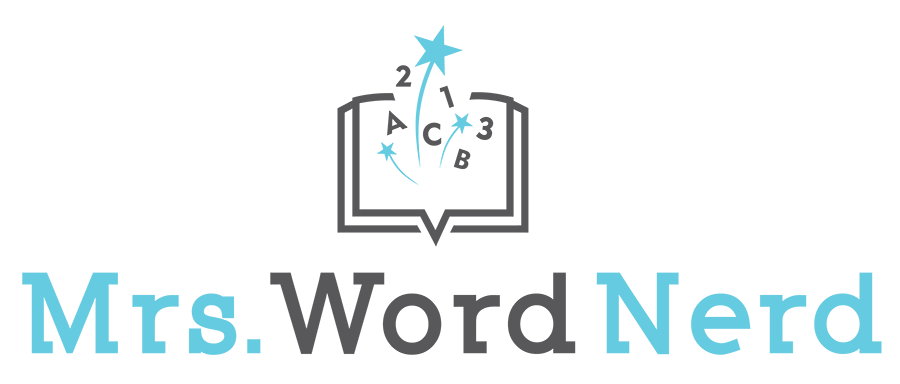
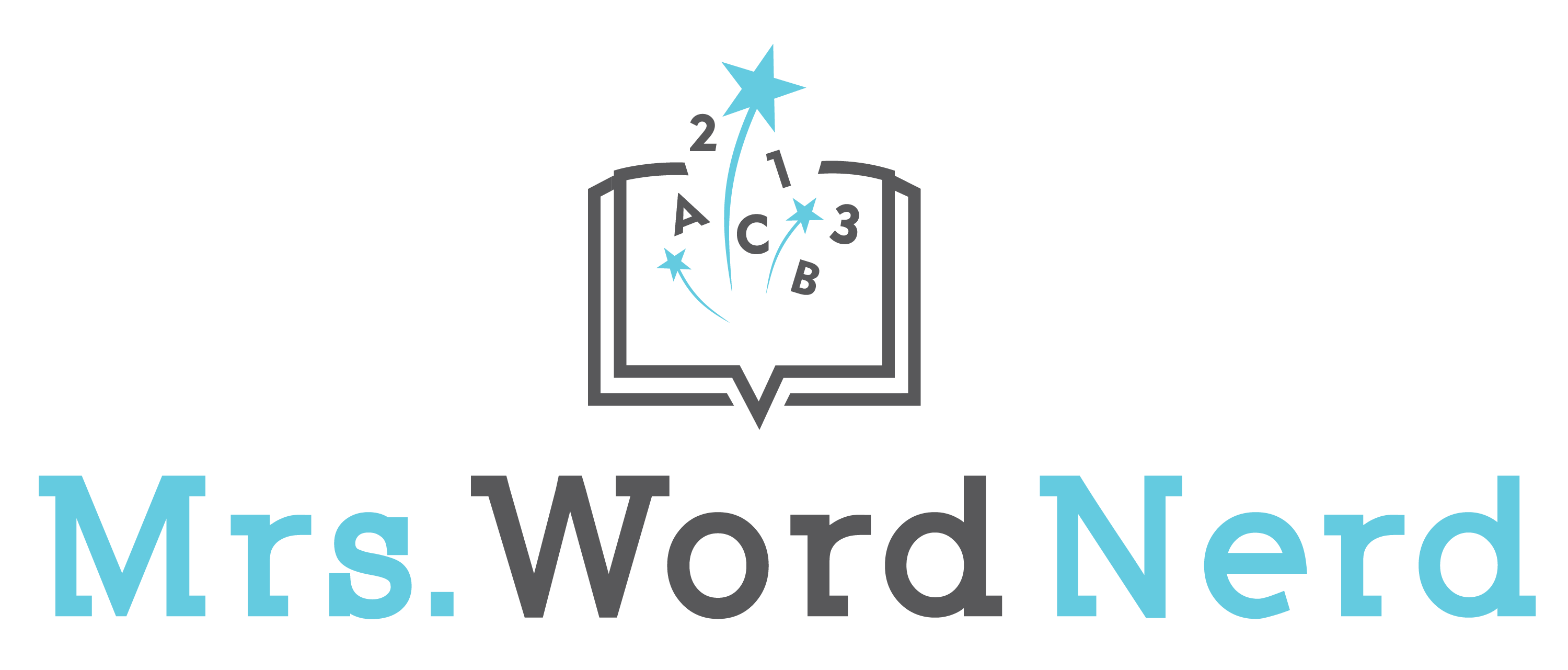
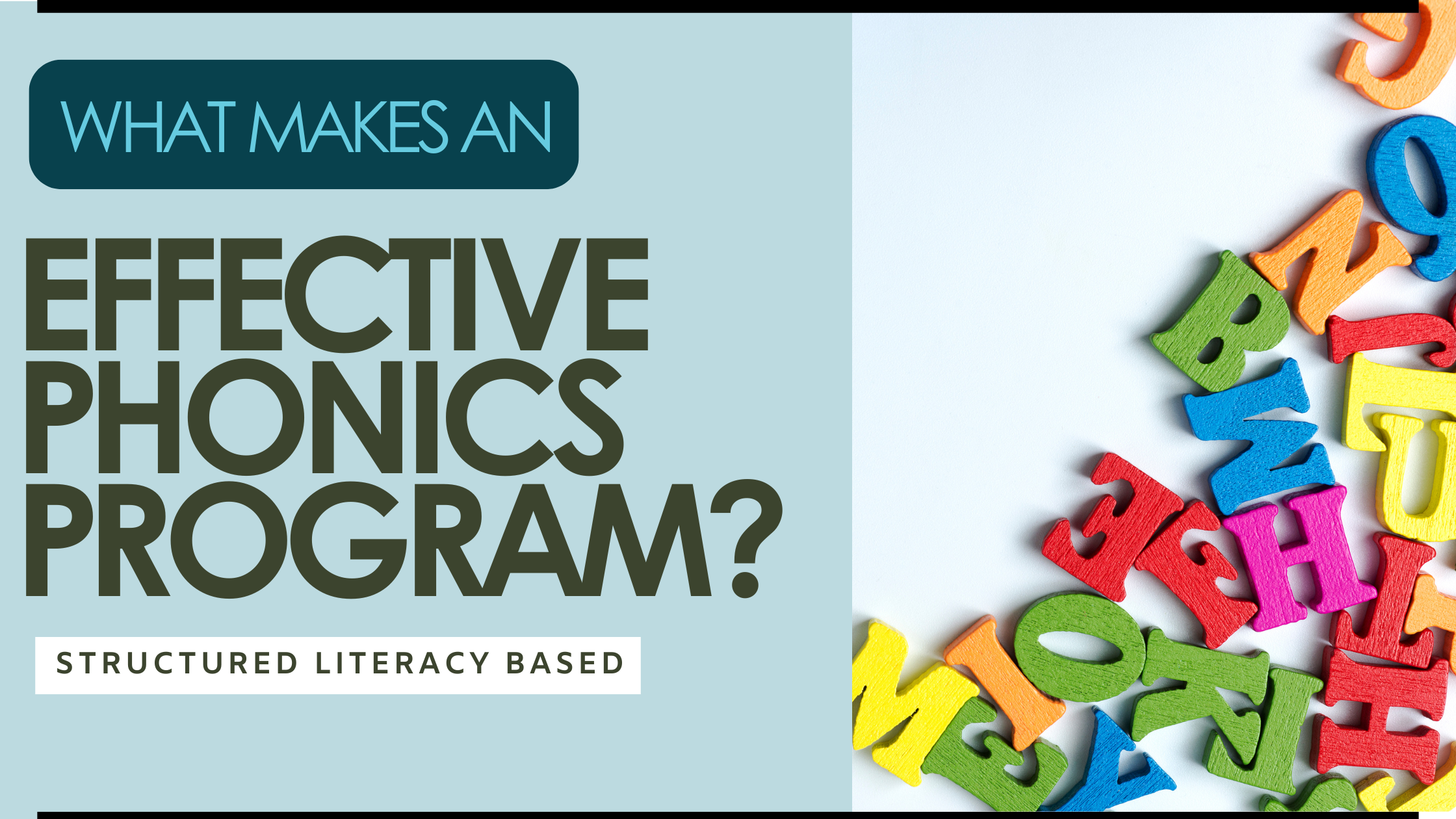
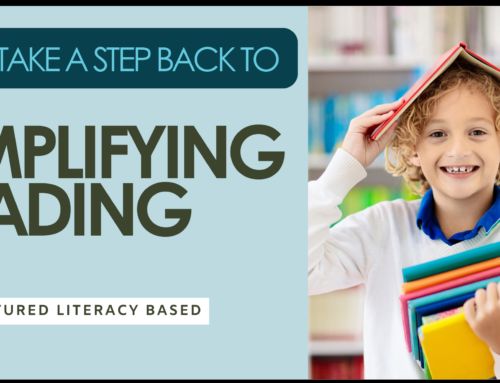

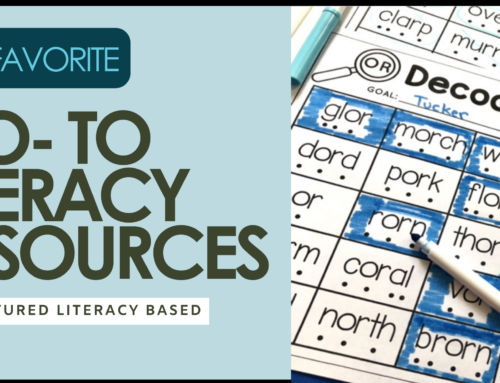
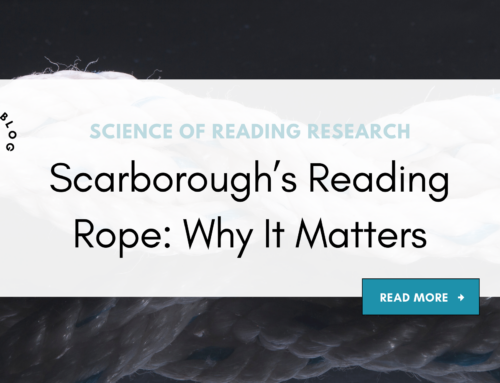
Leave A Comment